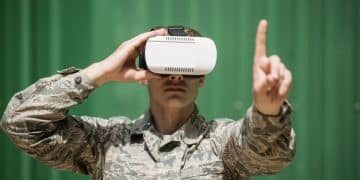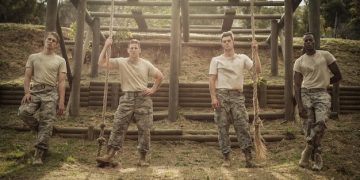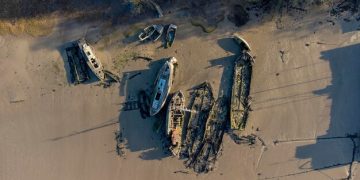How the US Military Uses VR for Combat Training: A Comprehensive Guide
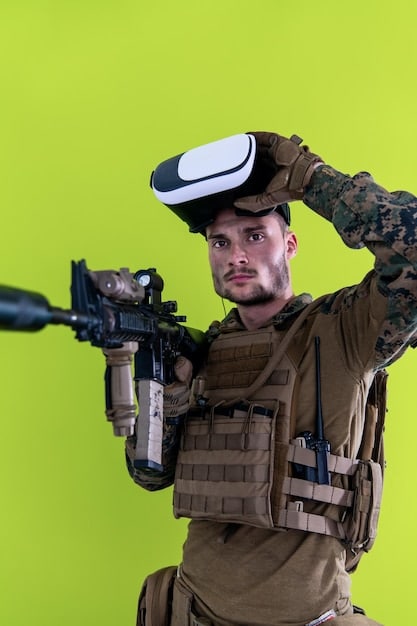
The U.S. Military is increasingly utilizing virtual reality (VR) for combat training simulations, providing immersive and realistic environments to prepare soldiers for various operational scenarios. This technology enhances training effectiveness, reduces costs, and minimizes risks associated with live exercises.
The U.S. Military is constantly seeking innovative methods to enhance the readiness and effectiveness of its personnel. One technology that has gained significant traction is virtual reality (VR). How is the US Military Utilizing Virtual Reality for Combat Training Simulations? This question is explored as we delve into the multifaceted applications of VR within the armed forces.
From immersive battlefield simulations to advanced medical training, VR offers a safe, cost-effective, and highly adaptable platform for preparing troops for the challenges of modern warfare. Let’s examine how this technology is reshaping military training paradigms.
How is the US Military Utilizing Virtual Reality for Combat Training Simulations?
The U.S. Military employs virtual reality for combat training simulations to create realistic, immersive environments where soldiers can hone their skills without the risks and costs associated with live exercises. These simulations replicate a wide range of scenarios and conditions, offering invaluable experience.
Enhanced Realism and Immersion
VR technology provides a level of realism and immersion that traditional training methods cannot match. Soldiers can experience the sights, sounds, and even the physical sensations of combat, making the training more engaging and effective.
- Realistic Battlefield Scenarios: VR simulations can replicate a variety of battlefield environments, from urban settings to remote desert landscapes.
- Interactive Training Exercises: Soldiers can interact with virtual environments and make real-time decisions that impact the outcome of the simulation.
- Detailed Feedback and Analysis: VR systems can track soldiers’ performance and provide detailed feedback to help them improve their skills.
VR allows for the creation of highly realistic scenarios that mimic actual combat situations, allowing soldiers to experience the stress and intensity of battle in a controlled environment.
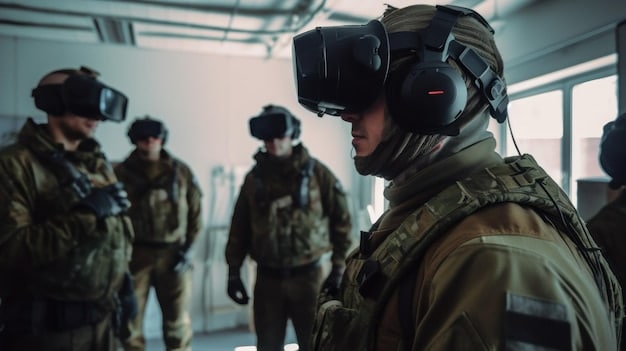
The Benefits of VR in Military Training
The benefits of using VR in military training extend beyond realism and immersion. VR training is cost-effective, safe, and highly adaptable, making it an ideal solution for many training needs. Some key benefits are:
Cost-Effectiveness
VR training can significantly reduce the costs associated with traditional training methods. Live exercises require large amounts of resources, including ammunition, fuel, and personnel. VR simulations eliminate these costs, making training more affordable. Consider these aspects:
- Reduced Ammunition Costs: VR simulations do not require live ammunition, saving significant amounts of money.
- Lower Fuel Consumption: VR training eliminates the need for vehicles and aircraft, reducing fuel consumption.
- Decreased Personnel Costs: VR simulations require fewer personnel to oversee and manage, lowering labor costs.
The reduction in costs allows for more frequent and comprehensive training, ensuring that soldiers are always prepared for any situation.
Safety
VR training eliminates the risks associated with live exercises. Soldiers can practice dangerous maneuvers and engage in simulated combat without the risk of injury or death. This is particularly important for training in high-risk environments, such as urban warfare or bomb disposal.
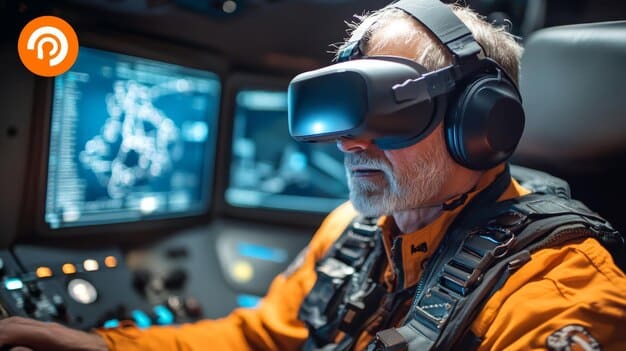
Applications of VR in Different Military Branches
Different branches of the U.S. Military are utilizing VR in unique ways to address their specific training needs. From the Army to the Air Force, VR is revolutionizing the way soldiers, sailors, and airmen are prepared for duty. Here’s a quick run down:
U.S. Army
The U.S. Army uses VR for a variety of training purposes, including combat simulations, vehicle operation, and maintenance training. VR simulations allow soldiers to practice complex tasks and procedures in a safe and controlled environment.
U.S. Navy
The U.S. Navy utilizes VR for shipboard training, damage control simulations, and flight simulations. VR allows sailors to practice critical skills in a realistic environment, preparing them for the challenges of naval operations.
VR offers the Navy a cost-effective way to train sailors on complex systems and procedures, ensuring they are ready for any contingency.
U.S. Air Force
The U.S. Air Force employs VR for flight simulations, air traffic control training, and maintenance training. VR allows pilots and air traffic controllers to practice their skills in a realistic environment, improving their performance and decision-making abilities. How is the US Military Utilizing Virtual Reality for Combat Training Simulations? The Air Force leverages VR to simulate different weather conditions and equipment failures.
The integration of VR across these branches underscores the commitment to leveraging technology to enhance training effectiveness and readiness.
The Future of VR in Military Training
The future of VR in military training is bright, with ongoing advancements in technology promising even more realistic and immersive training experiences. As VR technology continues to evolve, it will play an increasingly important role in preparing soldiers for the challenges of modern warfare.
Advancements in VR Technology
Advancements in VR technology are constantly pushing the boundaries of what is possible in military training. Higher resolution displays, more accurate motion tracking systems, and improved haptic feedback devices are enhancing the realism and immersion of VR simulations.
- Enhanced Graphics: Higher resolution displays provide sharper, more detailed visuals, making VR environments more realistic.
- Improved Motion Tracking: More accurate motion tracking systems allow soldiers to move and interact with VR environments more naturally.
- Haptic Feedback: Haptic feedback devices provide tactile sensations, such as the recoil of a weapon or the pressure of a medical procedure, enhancing the realism of VR simulations.
These technological advancements will enable even more effective and realistic training simulations, further improving the readiness of military personnel.
| Key Point | Brief Description |
|---|---|
| 🚀 Enhanced Realism | VR offers immersive, realistic battle simulations. |
| 💰 Cost-Effective | Reduces costs from ammo to fuel in training. |
| 🛡️ Safety | Lowers risks in dangerous simulation scenarios. |
Frequently Asked Questions
The primary advantages include enhanced realism, cost-effectiveness, and improved safety. VR simulations provide immersive experiences without the need for expensive resources or the risks associated with live exercises.
The U.S. Army, Navy, and Air Force are all using VR training in various capacities, including combat simulations, vehicle operation, shipboard training, and flight simulations.
VR enhances realism by providing immersive environments that mimic real-world conditions, allowing soldiers to experience the sights, sounds, and even the physical sensations of combat in a controlled setting. How is the US Military Utilizing Virtual Reality for Combat Training Simulations?
Future trends include advancements in VR technology, such as higher resolution displays, more accurate motion tracking, and improved haptic feedback devices, all of which will enhance the realism and effectiveness of training.
VR reduces risks by allowing soldiers to practice dangerous maneuvers and engage in simulated combat without the risk of injury or death. This is particularly important for training in high-risk environments. How is the US Military Utilizing Virtual Reality for Combat Training Simulations?
Conclusion
In conclusion, the U.S. Military’s utilization of virtual reality for combat training simulations represents a significant advancement in military preparedness, with applications ranging from battlefield simulations to medical training. This innovative approach not only enhances realism and reduces costs but also prioritizes the safety of military personnel.
As VR technology continues to evolve, it promises to play an increasingly vital role in shaping the future of military training, ensuring that soldiers are well-prepared for the complex challenges of modern warfare. How is the US Military Utilizing Virtual Reality for Combat Training Simulations? It’s clear that VR is a game-changer.
